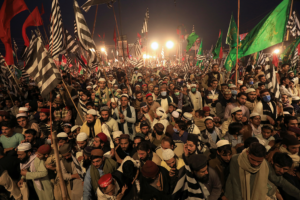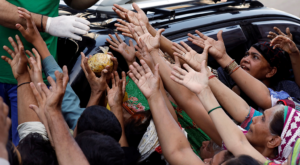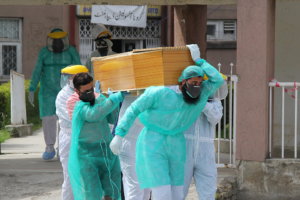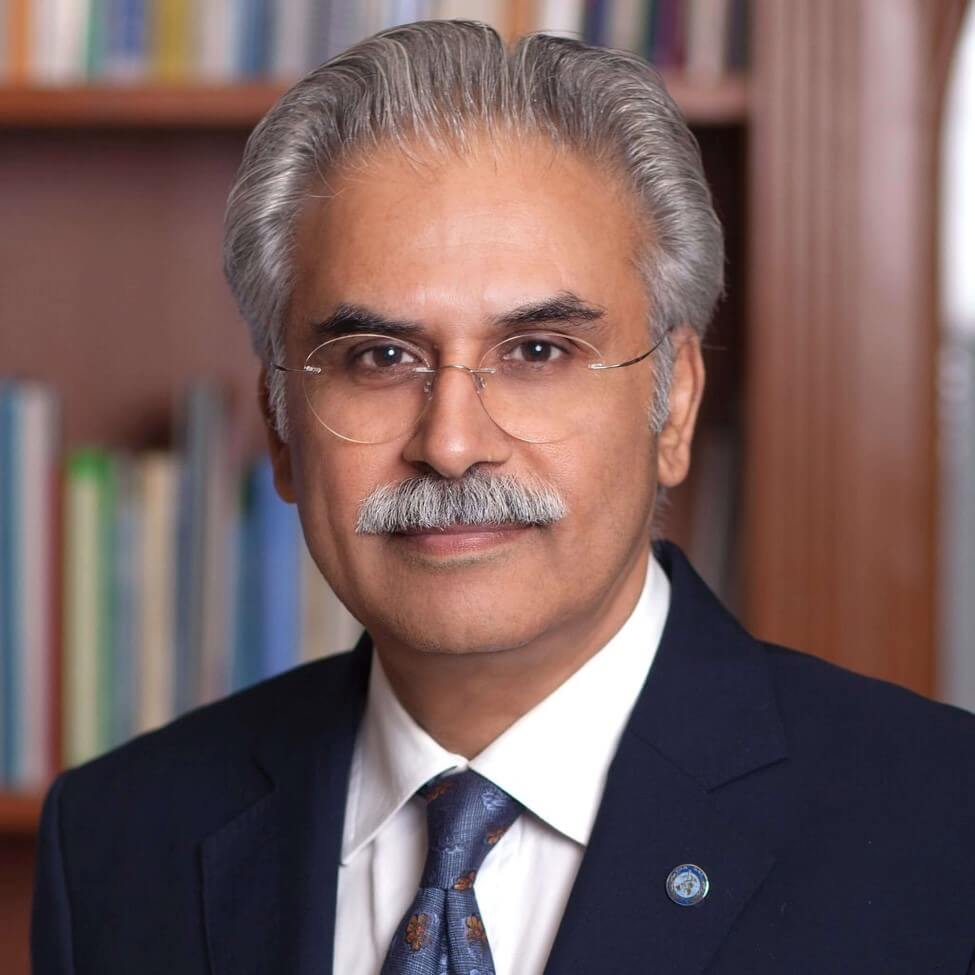We had hardly managed to rein the Covid outbreak in Pakistan, the so-called first wave, before it struck again. Despite cautioning against declaring premature victory, borne of misplaced pride and complacency, despite cautioning against resurgence, we have, in the last four months, ended up witnessing all this. And now, with every passing day, we see the rising tide of cases, those on ventilators and those dying. With every passing day, the curve takes on a significantly upward trajectory, increasingly it seems, with a vengeance.
By early December, daily fatalities were inching up to the near 75 mark — the highest number since the peak in June —and more than 300 Covid patients were on ventilators in different hospitals of the country. Of these it was estimated, 80-90 percent, if not more, would not survive.
Some expert field epidemiologists and I have been constantly ringing alarm bells about the Covid resurgence in Pakistan. It is no secret that a second wave has enveloped the globe. Record daily cases and deaths are being reported from more and more countries. The world is being locked down, yet we seem to have developed a belief that Pakistan has become fire-walled to the virus. With Inshallah being the standard solution we offer as the answer to all our troubles, perhaps we are testing Allah too much. Defying science and deriding statistics, our complacency seems to have permeated all layers of society, from cortex to core and from head to tail.
This time we had the benefit of hindsight. We knew exactly what to do, what worked last time and what didn’t. And yet this time round, there is a visible incomprehensible, impenetrable indifference at best, and straightforward denial at worst. The National Command Operation Center (NCOC) has been making, even if not without delay, the right recommendations, but has not been able to reach a consensus on the Covid issue and not due to scientific differences, but due to political reasons. Seemingly indifferent to people’s right to life, the political opposition has announced it will defy the government’s ban on political mass gatherings. We are allowing ourselves to slide into an abyss of our own making.

To begin with, we have unarguably delayed remedial action the second time round. The vigour of the response during the first wave is just not present. And not only are we late, we are doing too little. We have lost the last four months largely through inaction.
What makes it more reprehensible is the fact that we saw the rising trend more than 10 weeks ago. The NCOC kept raising the red flag, but no one came up with any remedial measures. Schools were allowed to open when the numbers were already rising. Educational institutes can admittedly not be kept indefinitely closed, but a better time for opening could have been chosen. Our risk-communication has gone down. Electronic channels have moved away from public service messaging, which was so effective during the early phase. Taking their cues from the lackadaisical attitude at the top, the public swiftly shrugged off any precautionary behaviours. Marriage halls started teeming with people with few masks in sight, and virtually no physical distancing. School vans on their way to and from school saw children stuffed into them without any consideration of social distancing. Mosques once again had shoulder-to-shoulder and ankle-to-ankle congregations. This against a backdrop of cases rapidly increasing. Through this inaction, we have let the transmission reach a disturbing level, and it is now accelerating exponentially.
And still we continue to do too little. What difference does it make if shops close at 10 or 6 pm? What difference does it make if the 1000 guest limit at weddings is now cut down to 500? Meanwhile, the opposition actively participated in elections in Gilgit-Baltistan, despite calls for a ban on public gatherings, and continues with its rallies attended by hundreds of thousands of unmasked people in the closest proximity. Clearly, there is a resistance to acknowledging the ongoing global pandemic.
We lost the initiative we had gained in the beginning in the July to October period by not increasing daily testing. Despite a proclaimed revised testing strategy, implementation remains to be seen.
In the first wave, the genuine concern at the top about the effect of a general and prolonged lockdown on daily wagers and the economy at large, is what guided the direction of the government response, despite immense pressure from the media and elite classes demanding a complete shut-down of the country. Out of this concern, developed the largest ever emergency cash transfer programme — PKR 144 billion, to address the economic hardship faced by 12 million poor families, with each family receiving PKR 12,000. The government also provided a PKR 1.5 trillion economic stimulus package. These initiatives provided great relief to the needy. Throughout the response effort, we were guided by a great concern to strike a balance between lives and livelihoods.

Striking this balance is still the key. It can be struck if we make timely decisions and don’t procrastinate. A stitch in time saves nine. We should be ready, and move in this direction. Short-term pain would result in long-term gain, like last time. But so far, that doesn’t seem to be the approach. Delay would only increase the chance of disaster, and the need for much more drastic measures aimed at containment. In short, what we are avoiding now will in all likelihood, given the disturbing data, have to be done more widely and for a prolonged period of time, with all the attendant and unintended consequences.
Pakistan had its first reported Covid case on February 26, as opposed to India on January 30, and Iran on February 19. We could have delayed, if not avoided the first case by monitoring and sealing our points of entry, especially airports. Our peak was on June 14, with 6,825 cases reported that day. It took less than four months from the appearance of the first case to reach the peak. In the second wave until now the rise has been slow, but definitive. On August 31, 213 cases a day were registered, the lowest since the June peak. On October 30 we crossed the 1000 per day threshold, and in the next two weeks, that number doubled to more than 2000 cases. On November 22, the number was 2,665. And all this is without any major change in the daily testing numbers.
Clearly then, the numbers are doubling with alarming speed. If this trend continues, and so far there are no indications to suggest it will not, the day we report a record number of cases, like many other countries in second wave, doesn’t look like a too-distant event. With this would rise the number of critically ill people, and the health care system will be overwhelmed. The wedding season, cold weather and our lukewarm interventions are only going to compound this situation.

We lost the initiative we had gained in the beginning in the July to October period by not increasing daily testing. Despite a proclaimed revised testing strategy, implementation remains to be seen. Testing should have started at the tehsil level and filtered down. According to plan, special camps were to be arranged for testing in peri-urban areas and all cases of Influenza-like illness (ILI) and Severe Acute Respiratory Infections (SARI) were to be tested for COVID-19. This was to be done along with the early incorporation of the COVID-19 Antigen Detection Rapid Diagnostic Testing (Ag-RDT). All this would have greatly increased the daily testing numbers which would have allowed the isolation of positives, and resulted in more informed smart lockdowns in areas of concentration. Both these would have resulted in lowering the spread of the virus. But the reality is that despite a lot of deliberation and strategising and despite building a capacity for conducting more than 100k tests per day in Pakistan, we have failed to increase daily tests beyond the 30 and 35k mark over the last six months. This is a serious shortcoming. We need to drill deeper into the reasons why we have not been able to implement our own strategy and take immediate remedial action.
Having led the national effort in the first phase and being part of the core team after the establishment of the NCOC, I have been close enough to be able to synthesise a few key lessons from this experience. The titles of these lessons are: the lack of a legal basis for declaring a national health emergency; addressing the problems posed by the 18th amendment in the health sector, especially during emergencies which demand a coherent national response; the need for a more predictable institutional basis for generating a health emergency response; serious implementation of the 2016 recommendations of the WHO-sponsored Joint External Evaluation of the status of Pakistan readiness to prevent, detect and respond to health threats in line with International Health Regulations (2005); a drastic reform of the Central Health Establishment responsible for health screening and quarantining at 19 Points of Entry in Pakistan; strengthening the field epidemiology and diseases surveillance system; changing the mindset of under-reporting cases; building critical care capacity; bolstering public education against stigmatising patients suffering from various diseases; and strengthening risk-communication. Health emergency preparedness and response must be deliberated upon and invested in when there is no emergency. There is no longer a concept of national security without health security. Biological threats and outbreaks of old and new diseases will continue and are likely to increase in frequency and lethality.
As the saying goes, there are no mistakes, only lessons, but only if they are taken. Otherwise, mistakes will be repeated. In this case, mistakes are translating into preventable loss of human life and unaccounted misery. The bitter truth is that in the end, we are the choices we make.

Dr. Zafar Mirza
The writer is a former Special Assistant to the Prime Minister for Health and has also served as the Director of Health System Development at the WHO Regional Office for the Eastern Mediterranean


